SRAM has brought electronic shifting down to the fourth tier of its road hierarchy, with a wireless option introduced to the all-new Apex groupset.
However, fans of shift cables rejoice – SRAM has also developed a new mechanical version of Apex.
Both the electronic and mechanical versions of the new SRAM Apex are 1x-only (there’s a single front chainring, with no front derailleur) and 12-speed. An additional sprocket is added to the cassette compared to the outgoing Apex drivetrain.
Two gearing options will be available, with XPLR (11-44t) and Eagle (11-52t) cassettes.
As a result, SRAM is aiming Apex squarely at gravel riding, bikepacking, cycle commuting and everything in between.
New SRAM Apex | What you need to know
- 12-speed mechanical and electronic (AXS) options
- 1x-only, with flat-bar and drop-bar variants
- Wide-range XPLR (11-44t) and Eagle (11-52t) gearing options
- HG-compatible cassettes
- Optional power meter
- Mechanical groupset from £1,035/$971/€1,149/AU$1,670
- Electronic groupset from £1,262/$1,195/€1,411/AU$2,054
- AXS complete groupset weights from 2,976g
- Mechanical complete groupset weights from 2,872g
Electronic shifting is more affordable than ever

Groupset manufacturers have been engaged in something of an electronic arms race of late, with SRAM the first to drop electronic shifting down to the third tier of its road groupset range with Rival AXS. Shimano then followed suit with 105 Di2.
This, however, is the cheapest electronic groupset we’ve seen to date, with the fourth-tier SRAM Apex AXS available for £1,262/$1,195/€1,411. You can expect to see complete bikes with electronic drivetrains from around $2,500, according to SRAM.
SRAM is also offering an Apex power meter upgrade for £205/$220/€230, making it one of the cheapest crank-based power meters available.
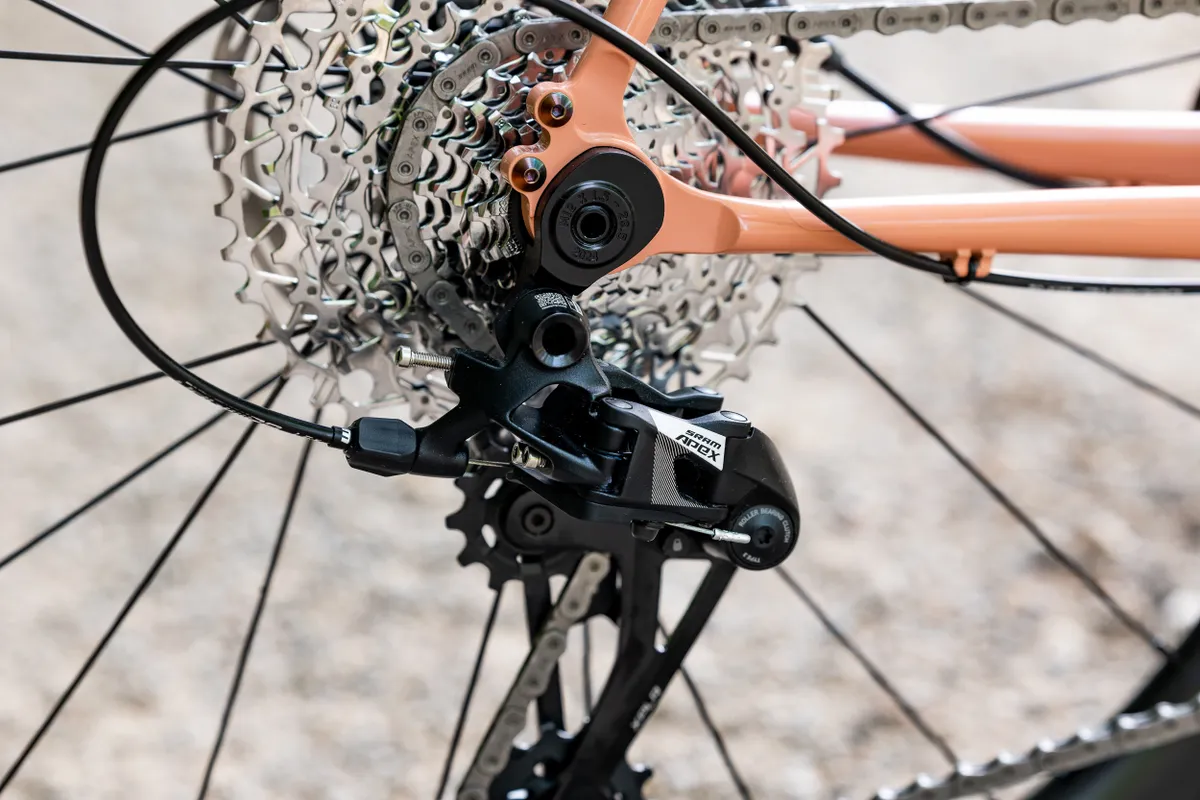
The 12-speed mechanical groupset costs from £1,035/$971/€1,149/AU$1,670. SRAM expects this to be specced on bikes from approximately $2,000.
SRAM Apex AXS will be available from June 2023, with the mechanical group following in September.
XPLR and Eagle gearing options

If you’re not familiar, the SRAM road groupset hierarchy runs as follows, in ascending order:
- SRAM Apex
- SRAM Rival
- SRAM Force
- SRAM Red
Eagle, meanwhile, is the overarching name given to SRAM’s 12-speed mountain bike groupsets, starting with SX, through to NX, GX, X01, XX1, X0 and X1, with AXS electronic options on GX, X01, XX1, XX and X0.
SRAM Apex has, for more than a decade, been the Chicago-based brand’s entry-level mechanical groupset and, in its 1x11 guise, has been a popular choice for entry-level to mid-range gravel bikes.
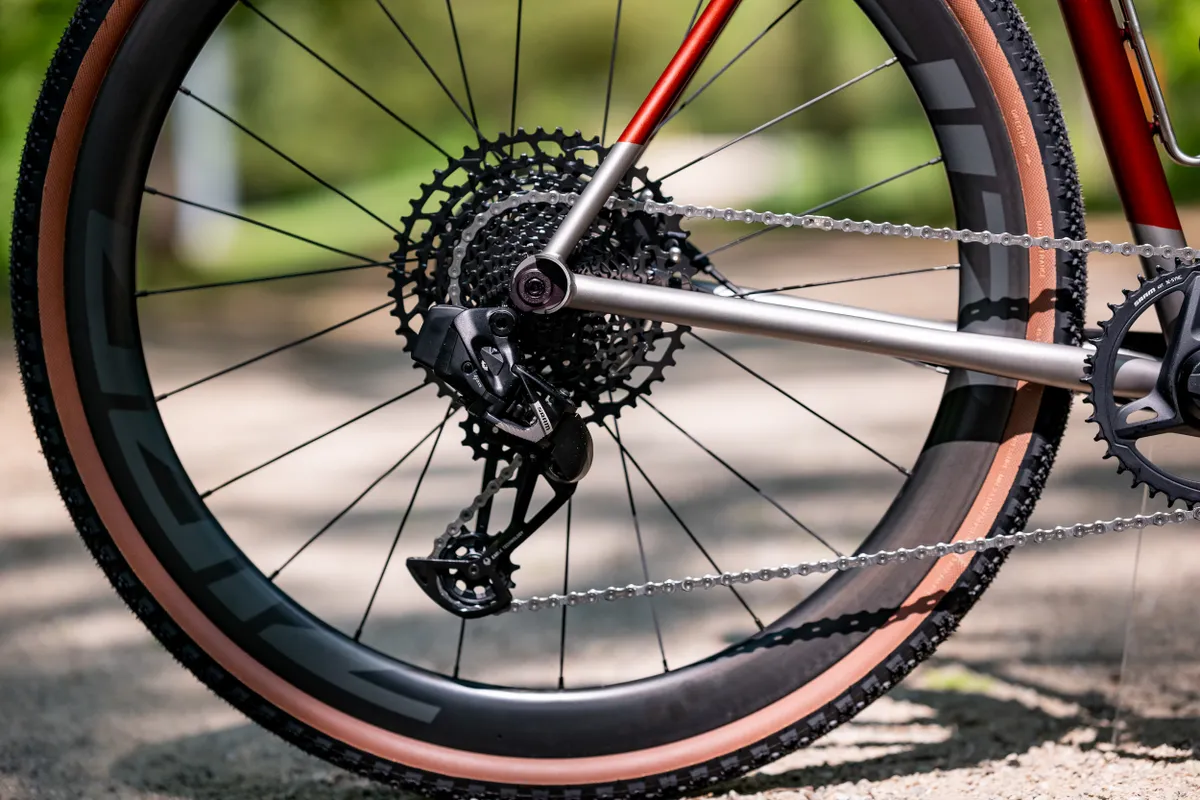
The mechanical design remained pretty much unchanged from the original SRAM Force CX1 in 2014, with its oversized hoods and DoubleTap shifting.
Now, Apex has had a complete redesign and, with this launch, SRAM Apex is available in four configurations: wireless AXS shifting with XPLR (11-44t) and Eagle (11-52t) gearing options, and mechanical shifting, once again with XPLR (11-44t) and Eagle (11-52) options.
Let’s run through each of them in turn.
11-tooth cassette sprockets and HG compatibility
Hold on, don’t SRAM’s 12-speed groupsets normally start with a 10-tooth cassette?
Well, instead of the usual 10t jump-off point, SRAM is starting with 11 teeth here to offer HG (Shimano) freehub compatibility. You can still use the 10-tooth XDR cassettes, though.
“An HG-compatible cassette is much cheaper to produce than an XDR-compatible one, and to keep Apex as cost-effective as possible, we’re offering the new 11-tooth HG options,” SRAM’s product manager, JP McCarthy, told BikeRadar.
SRAM Apex XPLR AXS
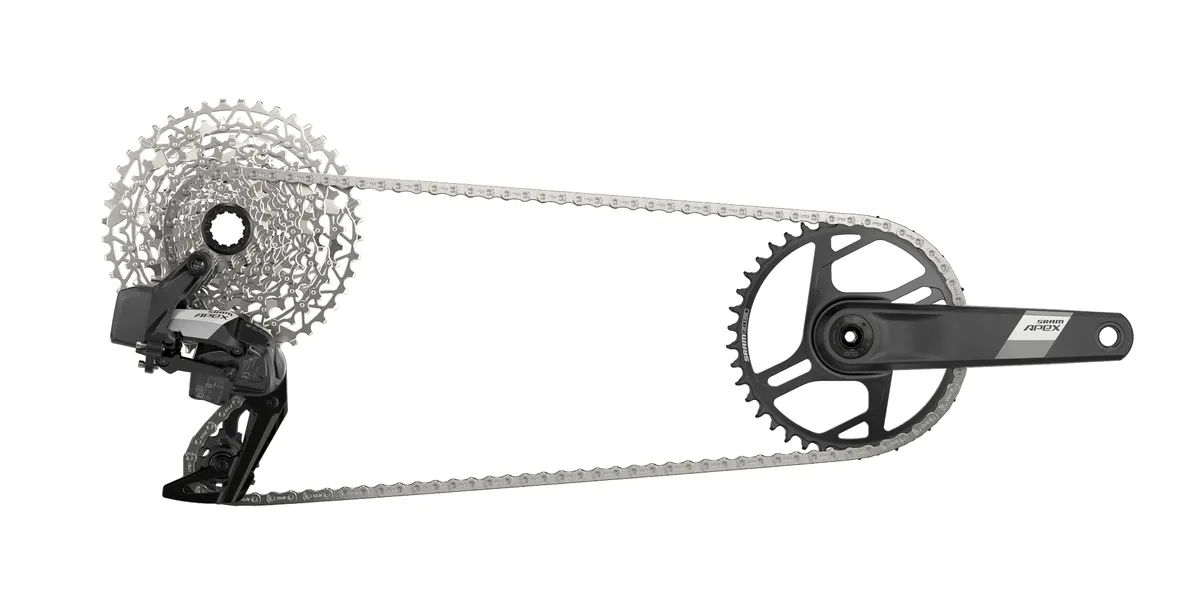
The Apex XPLR AXS setup has a new 1x-specific rear derailleur, for use with 11-44t XPLR, 10-44t XPLR and 10-36t cassettes, and SRAM’s Flattop chain.
Both AXS options (including the Eagle setup featured next) use SRAM’s new Apex AXS shifters and hydraulic disc brake calipers.

The shifters continue to use SRAM’s existing AXS shift logic: the right-hand lever shifts into a harder gear on the cassette and the left-hand lever shifts into an easier gear on the cassette.
SRAM Apex XPLR AXS real weights
We've already had our hands on a complete Apex XPLR AXS groupset, with real-world weights as follows.
| Weight (g) | |
|---|---|
| Shifter (right) | 429 |
| Shifter (left) | 415 |
| Crankset (42t) | 717 |
| Derailleur | 321.8 |
| Cassette (11-44t) | 403 |
| Chain | 262 |
| Bottom bracket | 73 |
| Rotors | 318 |
| Battery | 24.6 |
| Total | 2,981.40 |
| Total (excl bottom bracket) | 2,908.40 |
SRAM Apex Eagle AXS
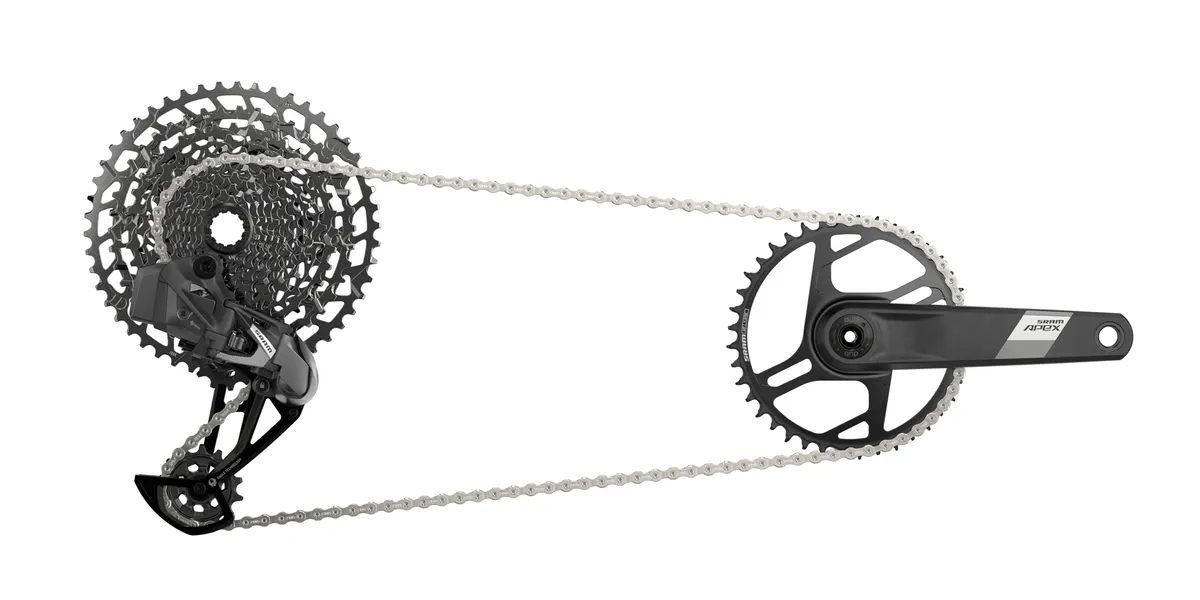
Want even wider gearing? SRAM is well and truly embracing mullet gearing by offering an Eagle option as standard for Apex.
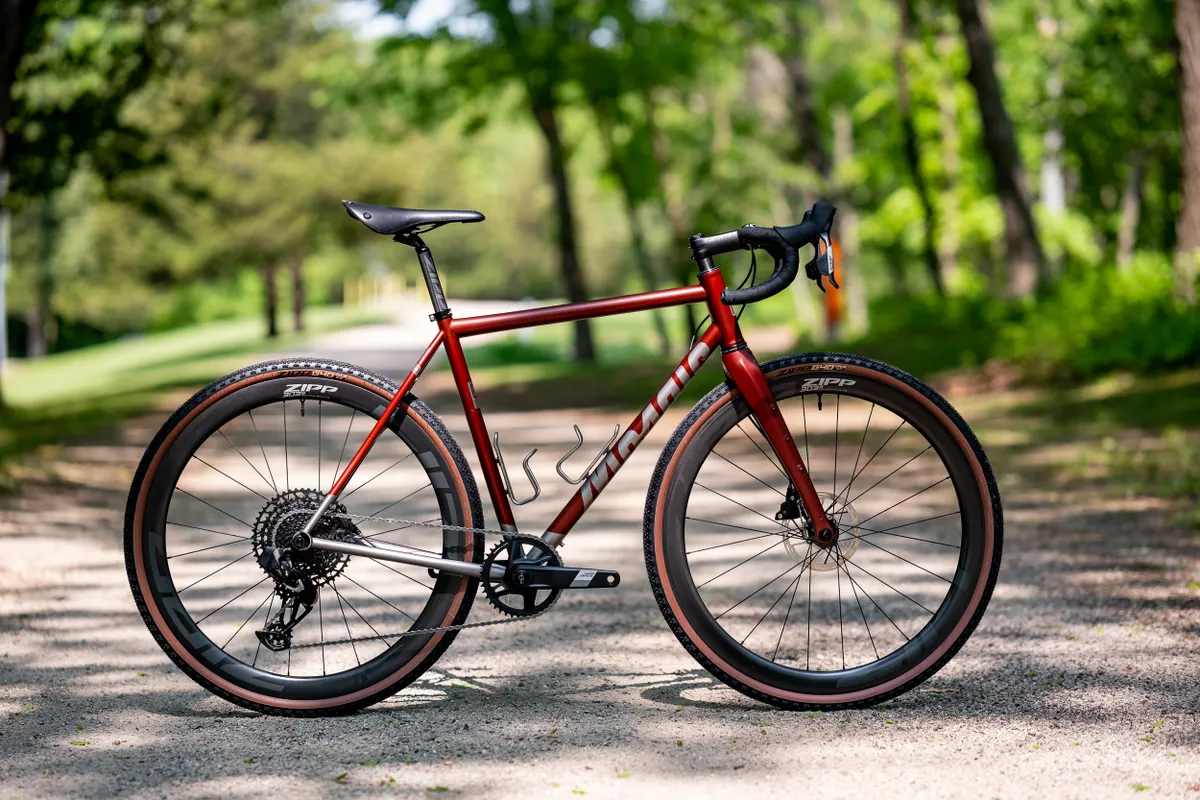
SRAM Apex Eagle AXS combines the new Apex shifters and brakes with SRAM’s existing GX Eagle AXS rear derailleur. This is compatible with cassettes with a 50t or 52t largest sprocket, using an Eagle (non-Flattop chain).
SRAM Apex XPLR mechanical
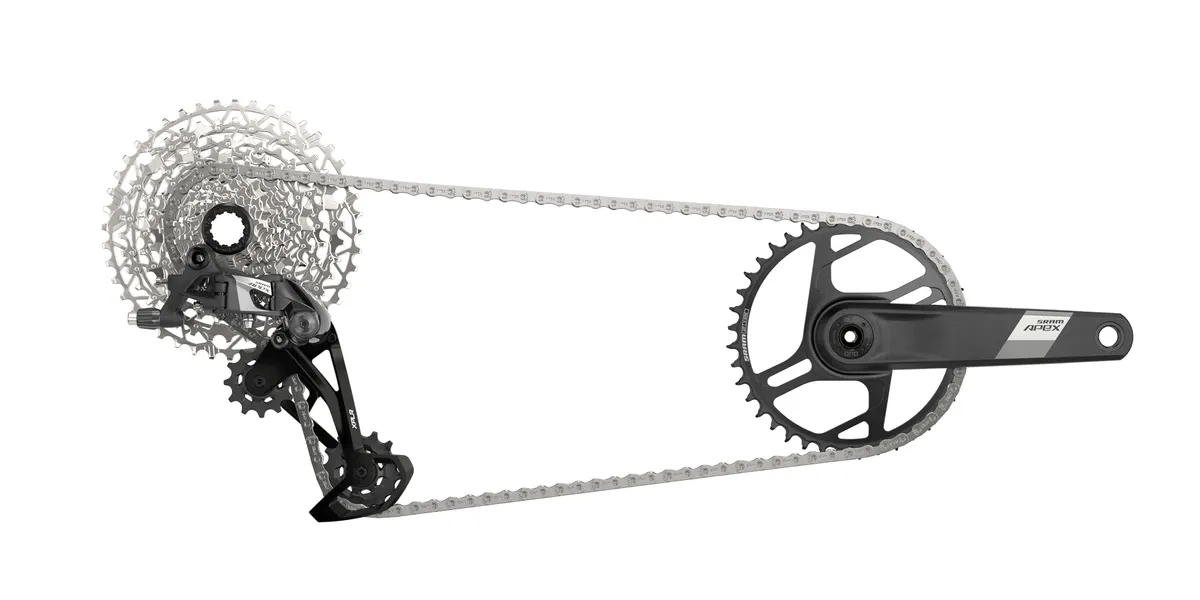
Moving on to the mechanical options, there’s also a new Apex XPLR cable-actuated rear derailleur, compatible with 11-44t and 10-44t cassettes.
The new Apex mechanical shifter uses SRAM’s long-standing DoubleTap actuation.

A single click of the lever shifts into a harder gear, while a long sweeping action of the same lever shifts into an easier gear.
The left-hand shifter has no shift lever, because there’s no front derailleur. It’s for braking only.
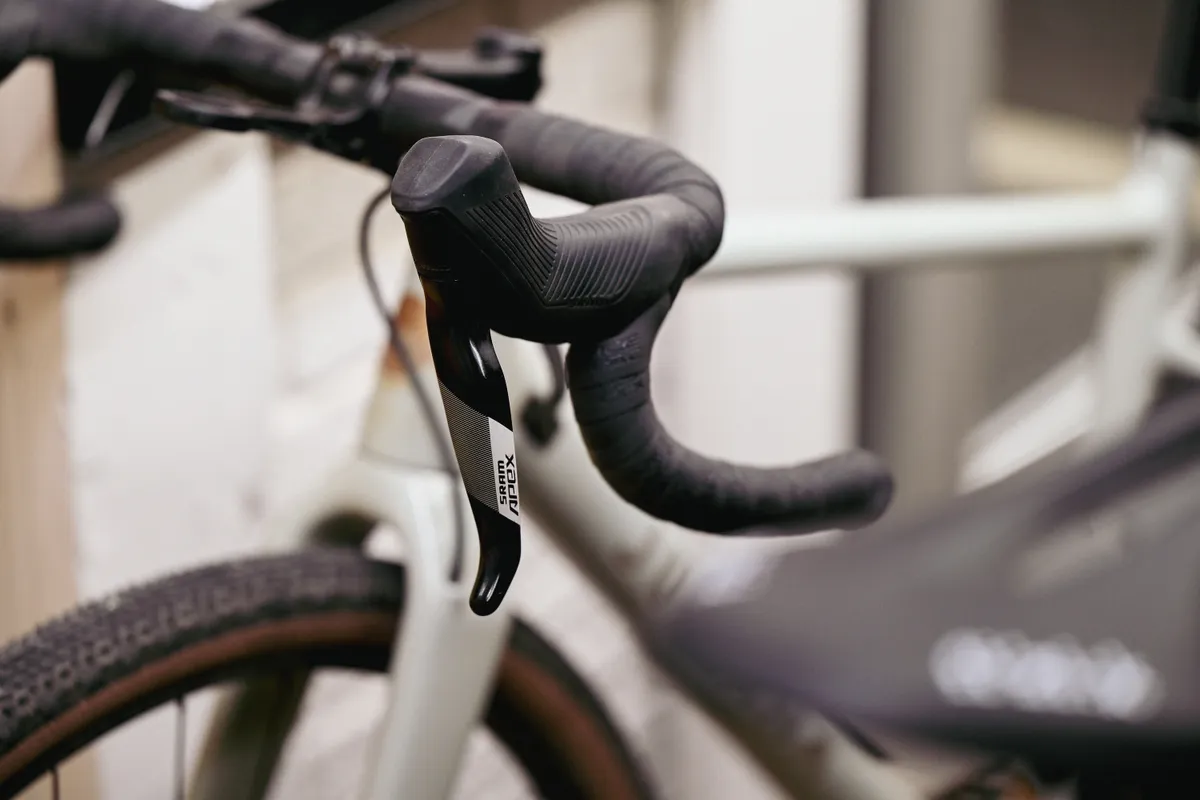
Like Apex XPLR AXS, the mechanical XPLR drivetrain is to be used with SRAM’s Flattop chain.
SRAM Apex Eagle mechanical
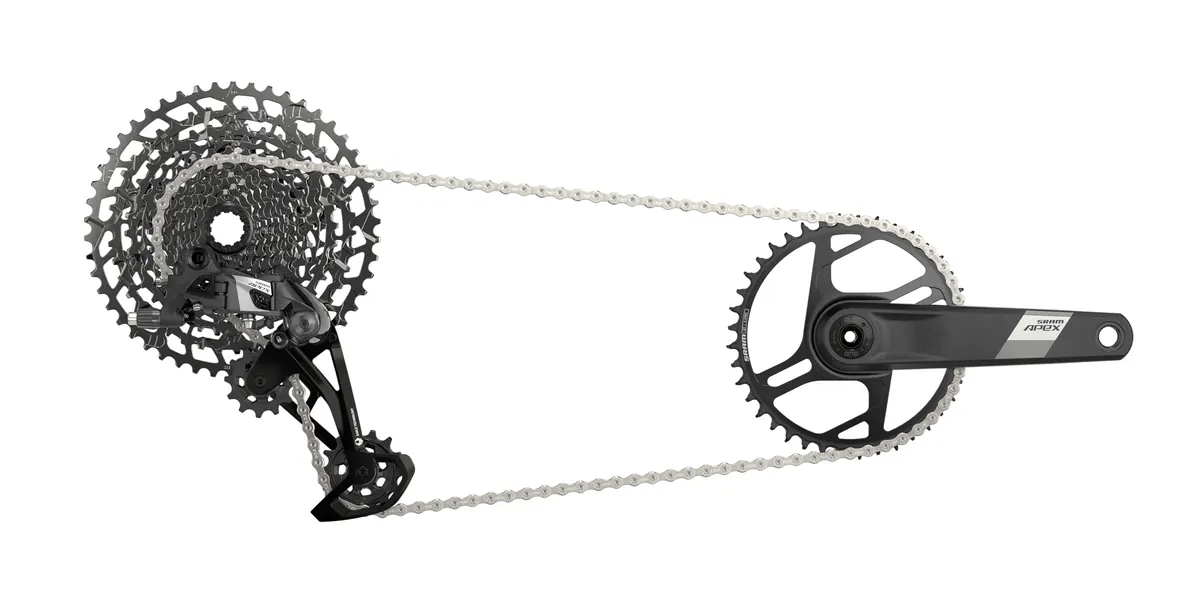
Finally, as far as drivetrain configurations are concerned, there’s SRAM Apex Eagle mechanical.
Here, there’s a new Apex Eagle mechanical rear derailleur, compatible with 50t and 52t Eagle cassettes and Eagle chains.
This is paired with the same shifters and brake setup as Apex XPLR mechanical.

What is mullet gearing?
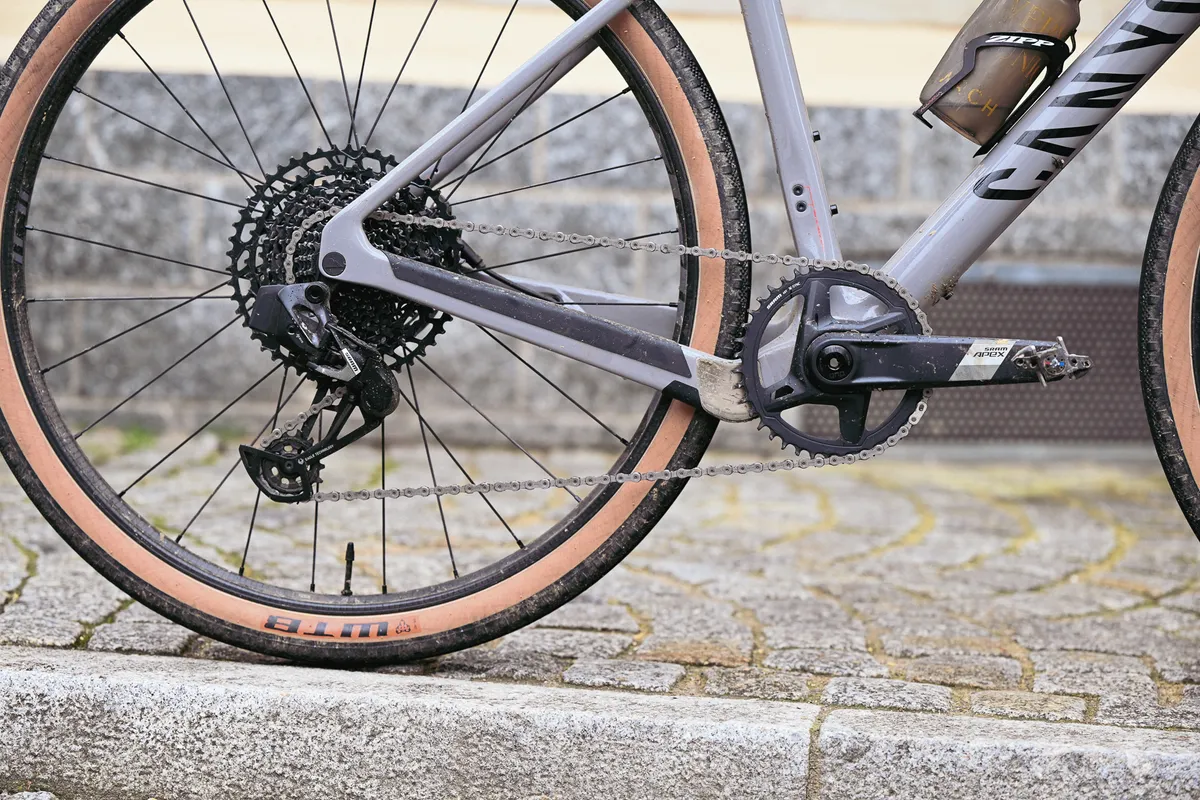
Mullet drivetrains started to appear on gravel bikes from the earliest builds. Mullet means simply mixing a standard road or gravel-derived chainring/crankset with a wider rear cassette and mountain bike derailleur.
The thinking is you’ll still maintain harder gears for faster sections of a ride, while having easier gear for technical and challenging off-road climbs.
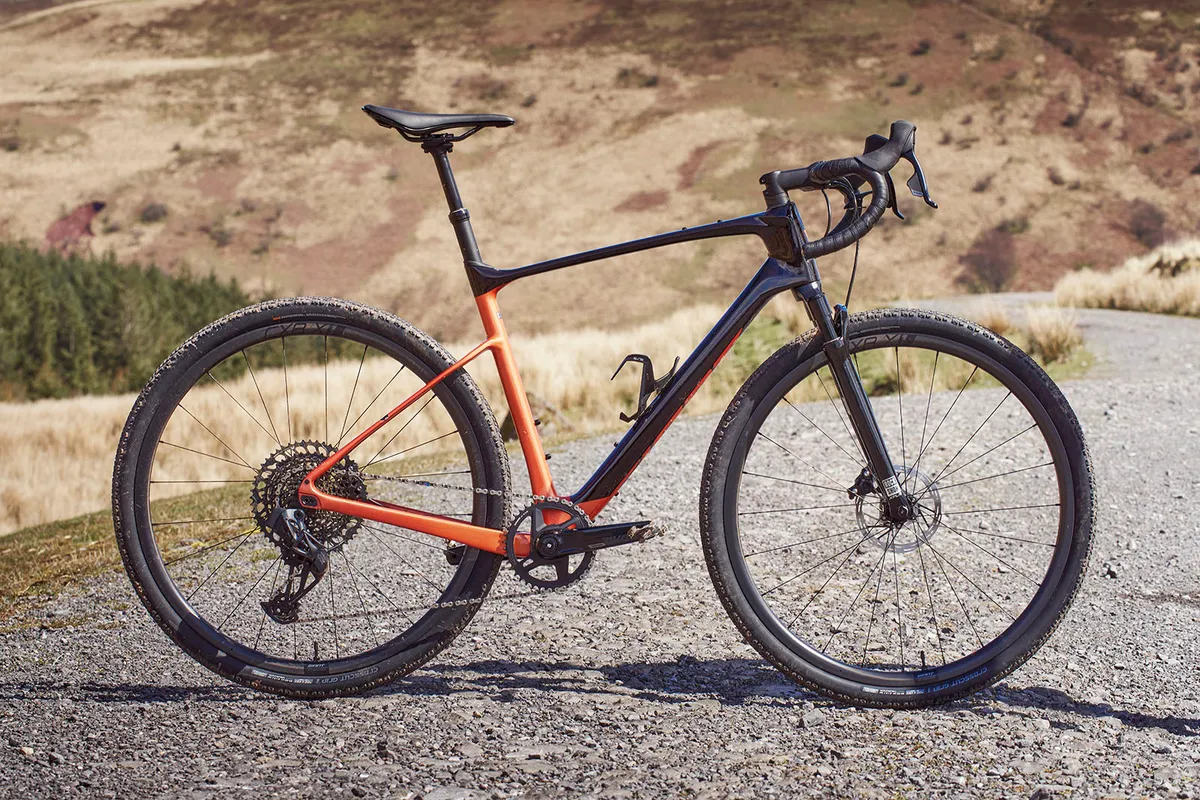
By making Eagle an official sub-set of Apex, SRAM seems to have fully legitimised the mullet gearing setup that we’ve seen used on plenty of complete bikes (and custom builds), including our current Gravel Bike of the Year, the Giant Revolt X.
The Revolt X mixes a 40t Rival gravel crankset with a GX Eagle AXS MTB rear derailleur and 10-52t cassette.
SRAM’s JP McCarthy summarises that XPLR – the brand’s gravel-specific components, introduced in 2021 – is for riders who like to challenge themselves and Eagle is for riders who like to challenge the terrain.
SRAM Apex AXS details
Slimmed-down shifters
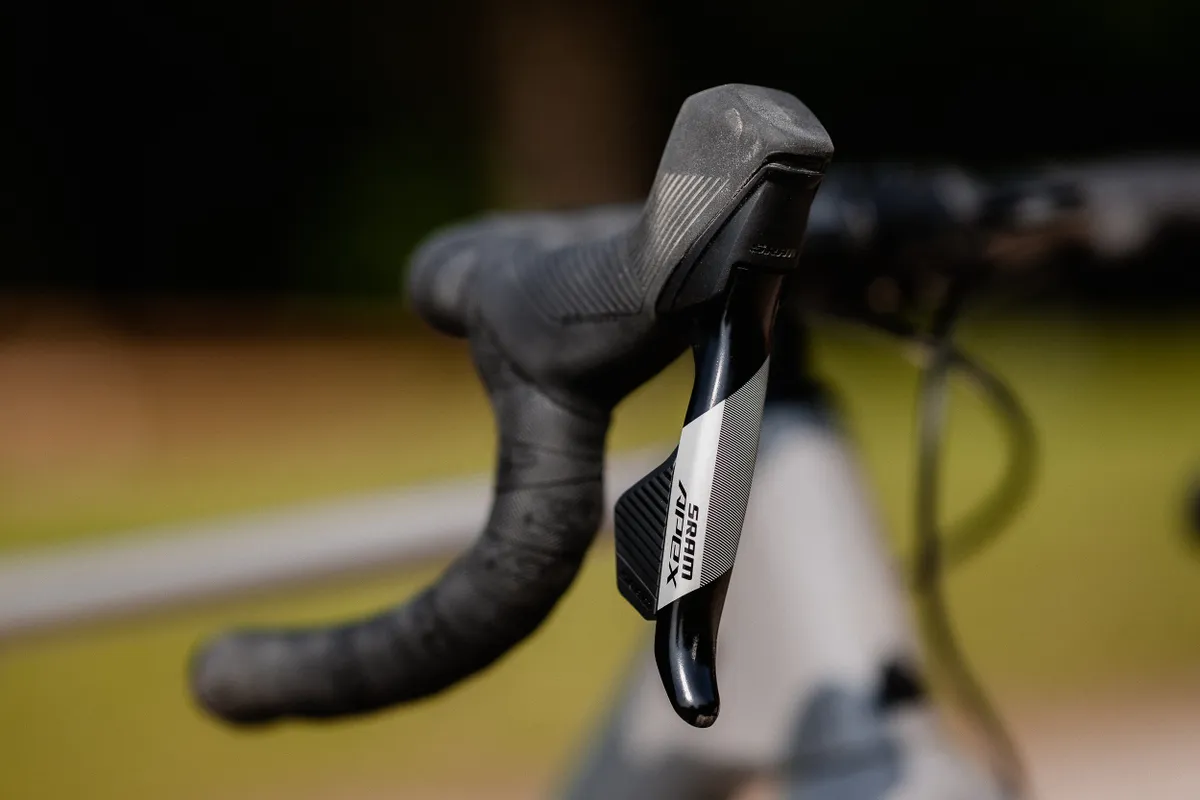
The new EP-APX-D1 shifters for the electronic groupset follow the same slimmed-down design as Rival AXS and Force AXS.
According to SRAM, the updated ergonomics also extend to a newly shaped (metal) lever, introduced to enhance the braking feel from the hoods.

The shifters retain reach adjustment via a 2.5mm hex bolt and have the same wireless connectivity as Rival AXS, enabling you to run wireless blips for remote shifting.
The only real difference between the Apex shifters and Rival shifters is the metal brake lever is stamped, rather than the forged unit on its pricier sibling.
Connectivity

The connectivity present on all of SRAM’s electronic groupsets exists here via the AXS app, including app-based configurations, data capture and firmware updates.
That means you can change, for example, the functions of the AXS shift buttons and keep a track of information such as battery status and shift data.
SRAM Apex XPLR AXS rear derailleur
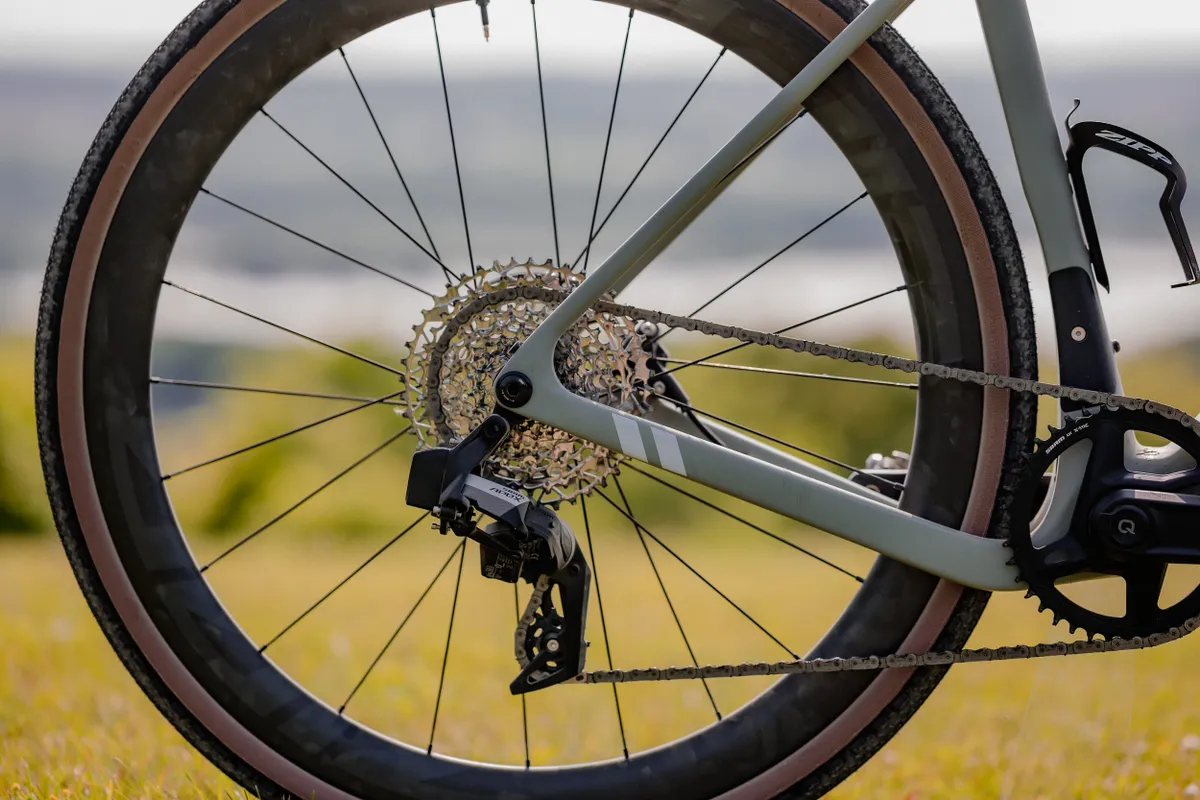
The XPLR AXS derailleur is designed to work with cassettes with the biggest sprockets from 36 teeth to 44 teeth in size.
Like Rival AXS, the derailleur manages chain bounce with a spring clutch.
While Apex introduces an 11-tooth HG-compatible cassette, the Apex XPLR AXS rear derailleur can be used with an XDR 10-tooth cassette sprocket as well, opening up compatibility with SRAM’s existing 12-speed cassettes.
SRAM Apex Eagle AXS rear derailleur
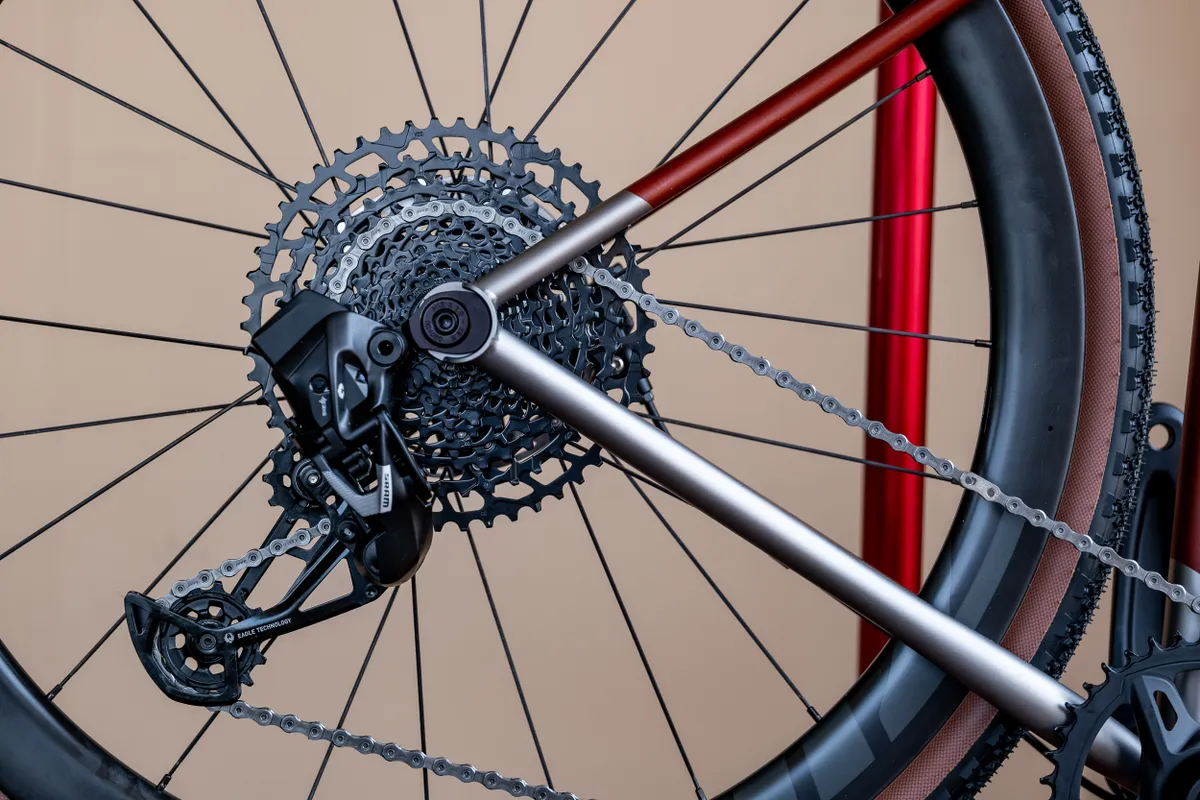
The GX Eagle AXS rear derailleur is compatible with all SRAM Eagle drivetrain cassettes.
The design features a Type-3 roller bearing clutch to prevent chain slap and the Overload clutch, which disengages the motor system in case of a serious impact. This helps, SRAM says, to prevent damage to the gear shift motor and electronics.
SRAM has also carried over the Cage-Lock feature to make for easier wheel changes and chain installation.
It’s compatible with 50 and 52-tooth cassettes, in both 10 and 11-tooth HG and XDR guises.
There’s a power meter upgrade for Apex, too

Perhaps the most unexpected announcement around Apex is the inclusion of a power meter upgrade option.
The single-sided, left-hand crank upgrade, with its power meter spindle, is the same design as found on both Force AXS 1x and Rival AXS. However, the crank arm material and finish differs to bring the price down.
The power meter runs from a AAA lithium battery with a claimed 400 hours of run time and is rated to IPX7 water resistance (SRAM claims it can be submerged in a metre of water for 30 minutes). It adds only 40g to the existing crankset weight.
Priced at £205/$220/€230, it could open up a new, more affordable upgrade option for existing SRAM AXS users, because it shares the same DUB standard.
Shared components
A number of components are shared between some or all of the groupsets, including the disc brake calipers, crankset, chains and cassette.
Hydraulic disc brakes

The brakes get a new caliper design. The more compact, flat-mount shape is based on the mountain bike SRAM Level design.
SRAM claims there’s no difference between the performance of this new brake and those from the higher groupsets.
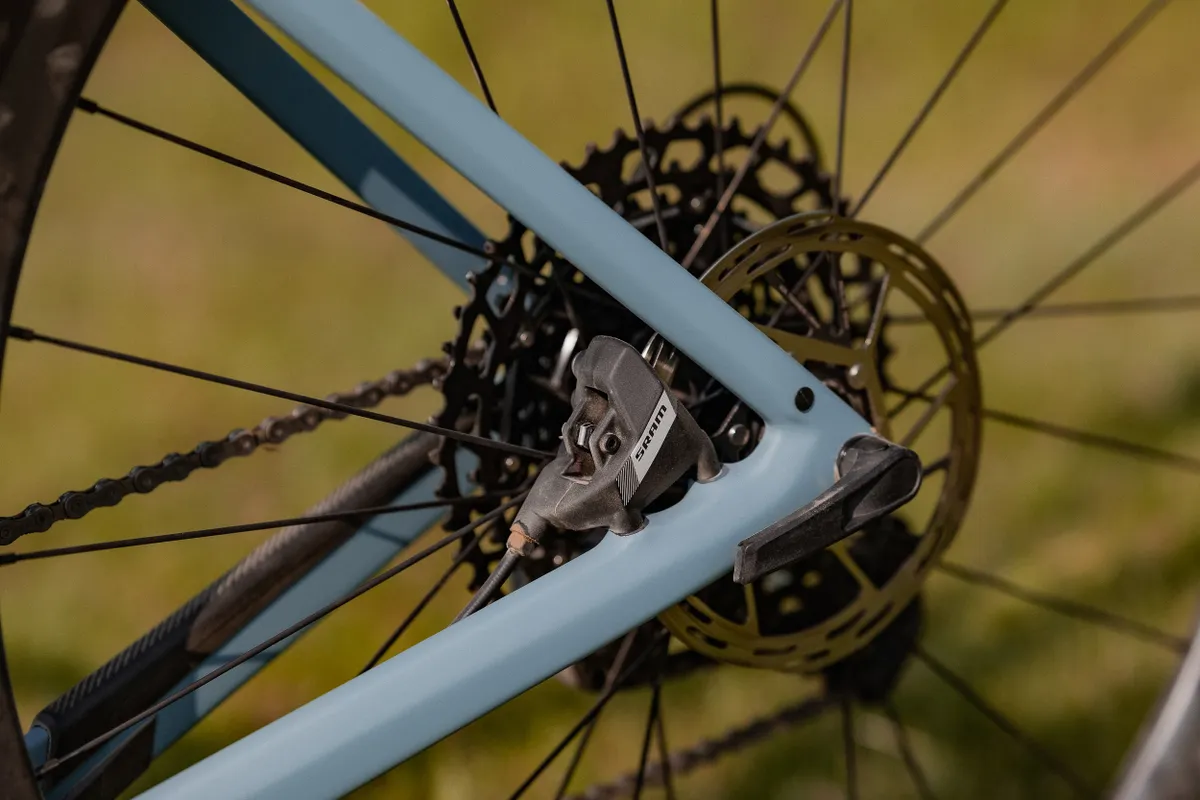
However, it doesn’t have SRAM’s Bleeding Edge ports, designed to make bleeding the brakes quicker and easier; instead, the brakes use the older threaded bleed ports.
The new hydraulic disc brake calipers are the same across the AXS and mechanical versions of Apex.
SRAM Apex 1 Wide crankset
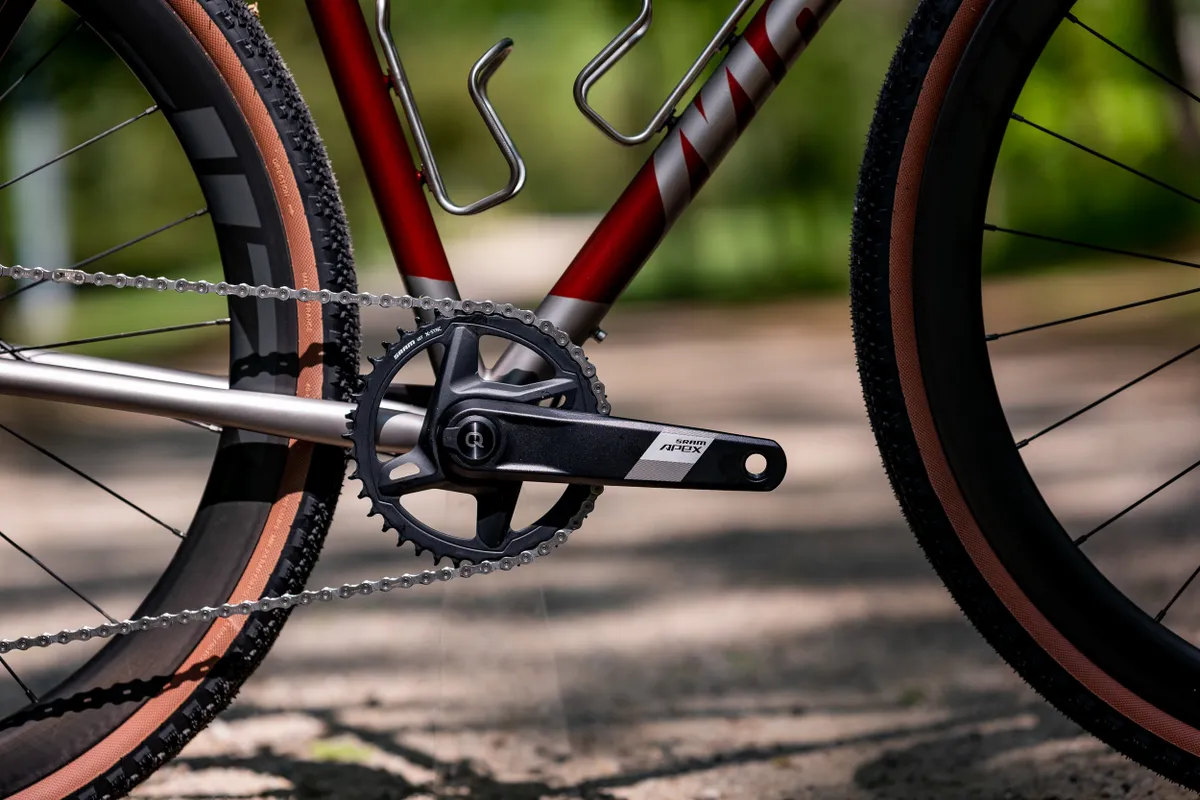
The new SRAM Apex 1 Wide crankset is also shared across both mechanical and electronic versions of the groupset.
The aluminum crank arms combine with a direct-mount chainring, all designed around a 47.5mm chainline that’s more generous than a standard road crankset, in order to offer room for wider tyres.
SRAM says the longer DUB crank spindle can accommodate both road and MTB-width frame bottom bracket standards. The crankset is compatible with 135mm, 142mm and Boost rear spacing.
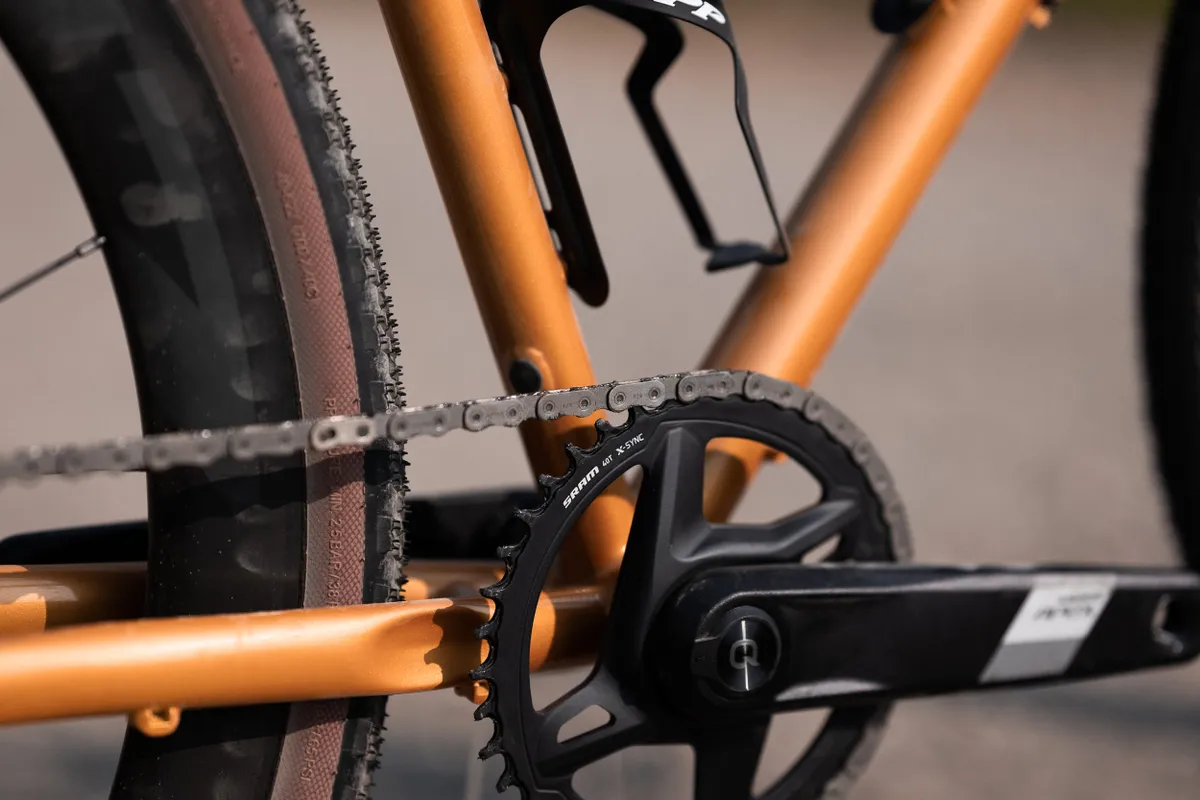
Chainring options cover 38t, 40t, 42t, 44t, and 46t, with the 40-tooth also available in steel. The chainrings for OEM cranksets also have a cheaper steel 40-tooth option, while aftermarket chainsets are available in 40 and 42-tooth options.
Cranks lengths are 160, 165, 170, 172.5 and 175mm.
The key difference between the Apex crankset and the more expensive Rival version is the finish. Where Rival gets a polished, coated glossy finish with laser-etched graphics, Apex makes do with a matt-blasted finish and etched logos.
SRAM Apex XPLR cassette
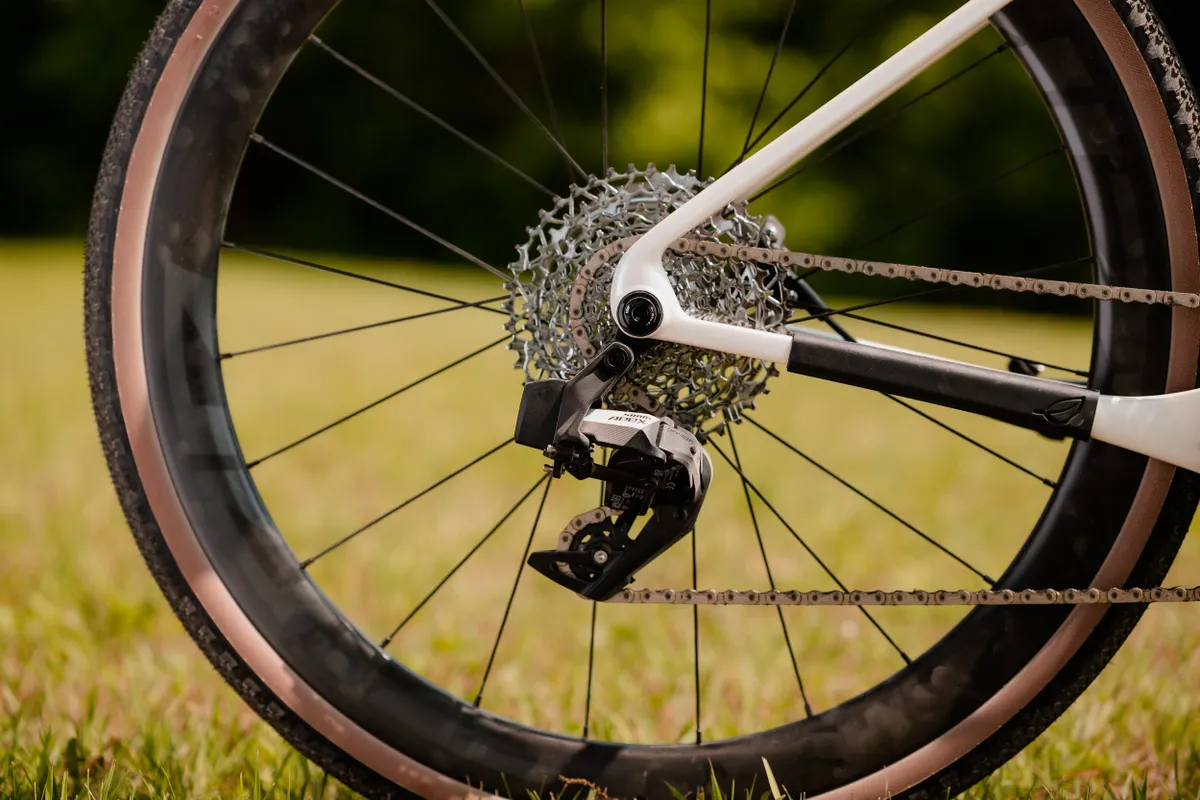
As we’ve already covered, the Apex XPLR cassette offers an 11-44t range, with 11, 12, 13, 15, 17, 19, 21, 24, 28, 32, 38 and 44 sprockets.
“The smooth cog progression keeps jumps between cogs tightest when it’s time to go fast, with more meaningful gaps for climbing,” according to SRAM.
It’s for use with XPLR 1x rear derailleurs and Flattop chains. The Eagle derailleurs must use an Eagle cassette.
SRAM Apex AXS XPLR chain

The standard Apex XPLR chain uses the same Flattop design as all road/gravel-going AXS groups, but gets a simple raw steel finish, rather than the nickel-plating of Rival.
If you’re running an Apex Eagle AXS drivetrain, you’ll use the existing 12-speed Eagle chain, rather than the flat-topped design.
The mechanical revival
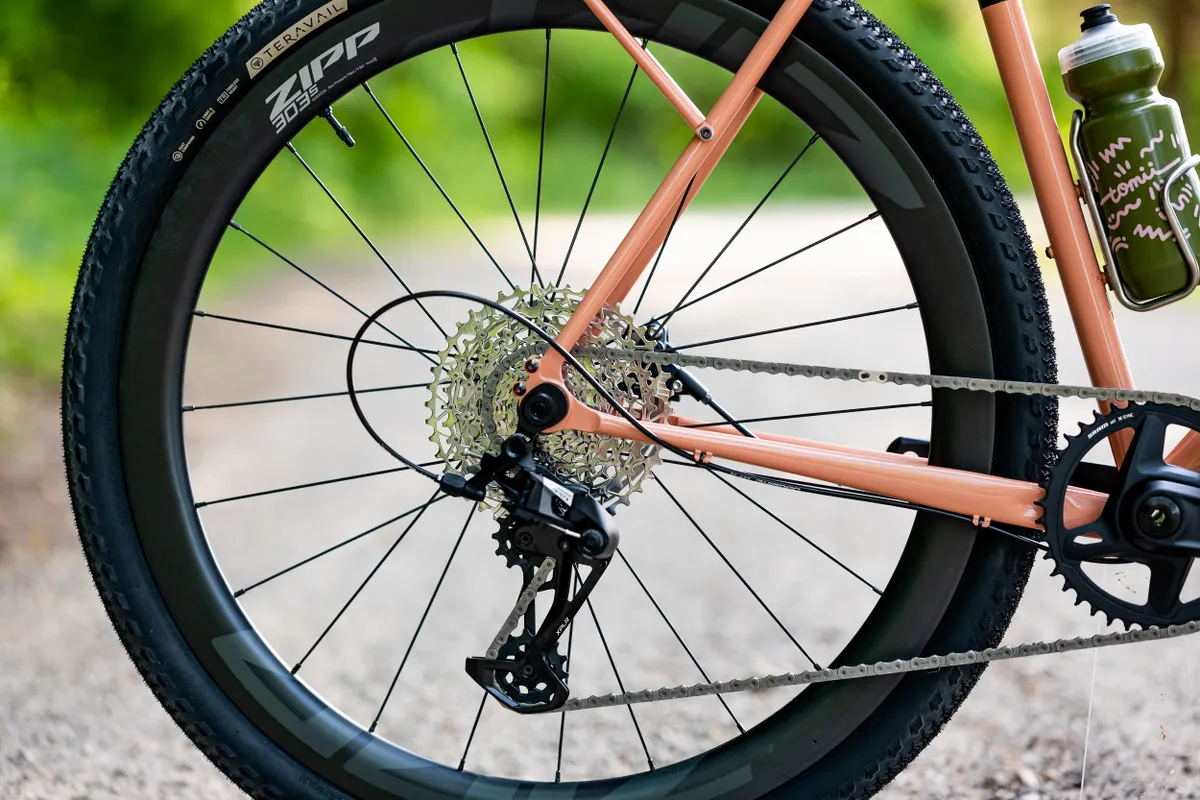
Most people thought SRAM had all but given up on the mechanical drivetrain, given the focus on electronic groupsets for Red, Force and Rival, but that’s not the case here.
“We never gave up on mechanical shifting, but eTap and AXS have taken up a lot of our development time,” SRAM’s road product manager, Brad Menna, told BikeRadar. “We have been working on mechanical for over three years and Apex 1x 12 is now ready.”
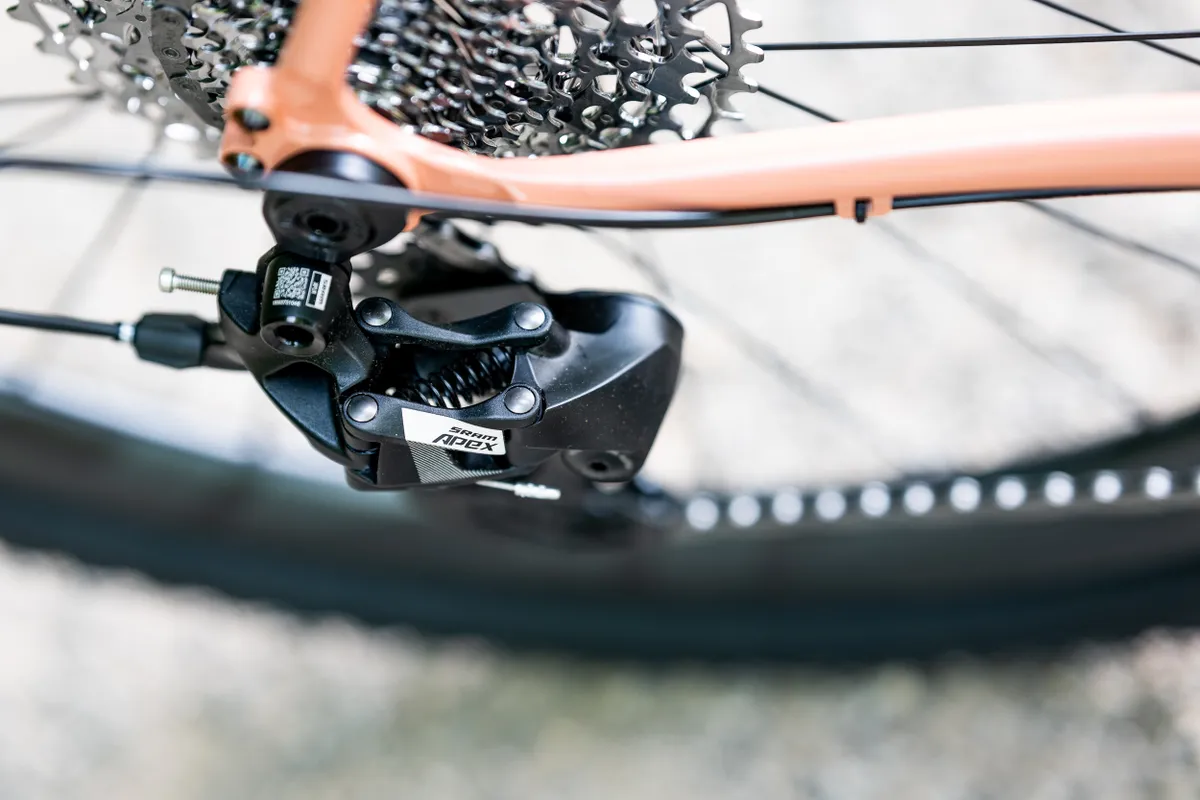
The old Apex 1x 11 system was basically unchanged for nearly a decade, with the new setup not sharing any element of the ageing Apex 1.
The move to 12-speed opens up more options to mix and match within SRAM’s groupset hierarchy, as well as the possibility of upgrading to electronic shifting down the line.
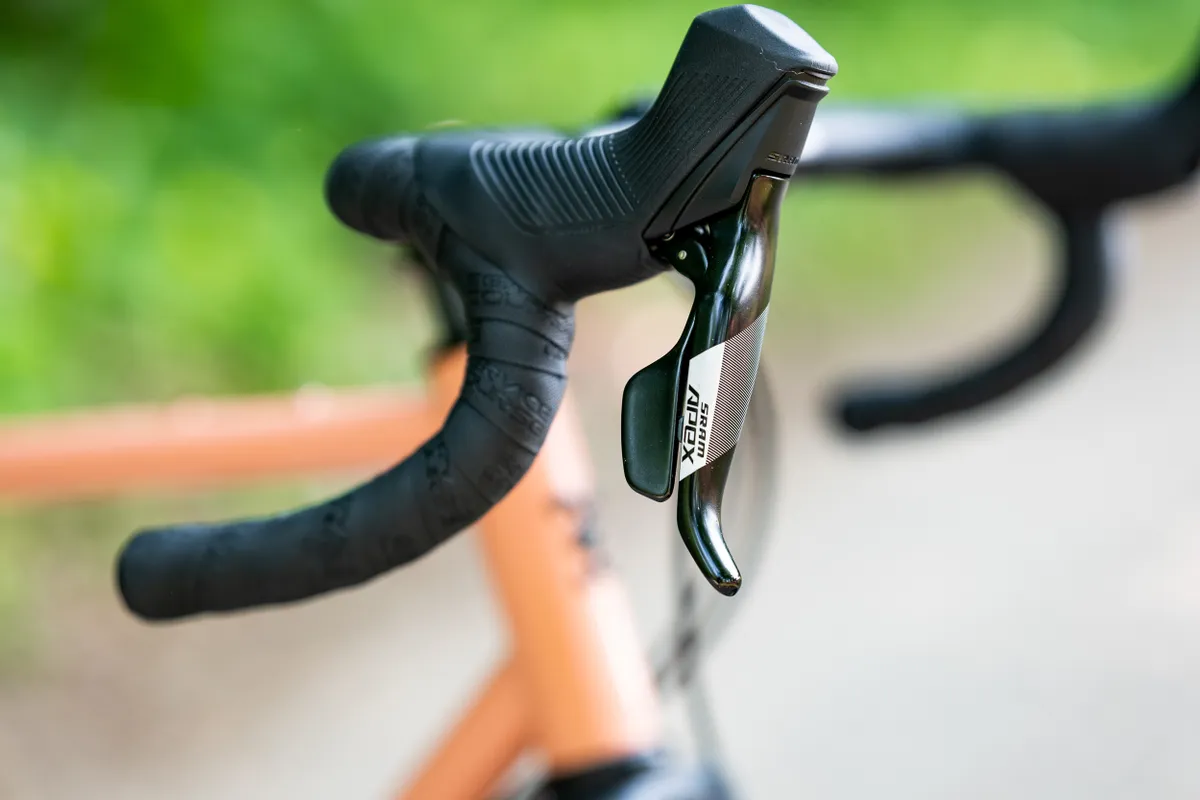
The two new rear derailleurs combine with a newly developed set of shifters, which have a similarly slim profile to AXS and a shallower hood, too.
However, they are still a little larger than AXS (albeit less than 5mm in width and length) due to the mechanical shift components being bigger than AXS electronics.
Flat-bar option
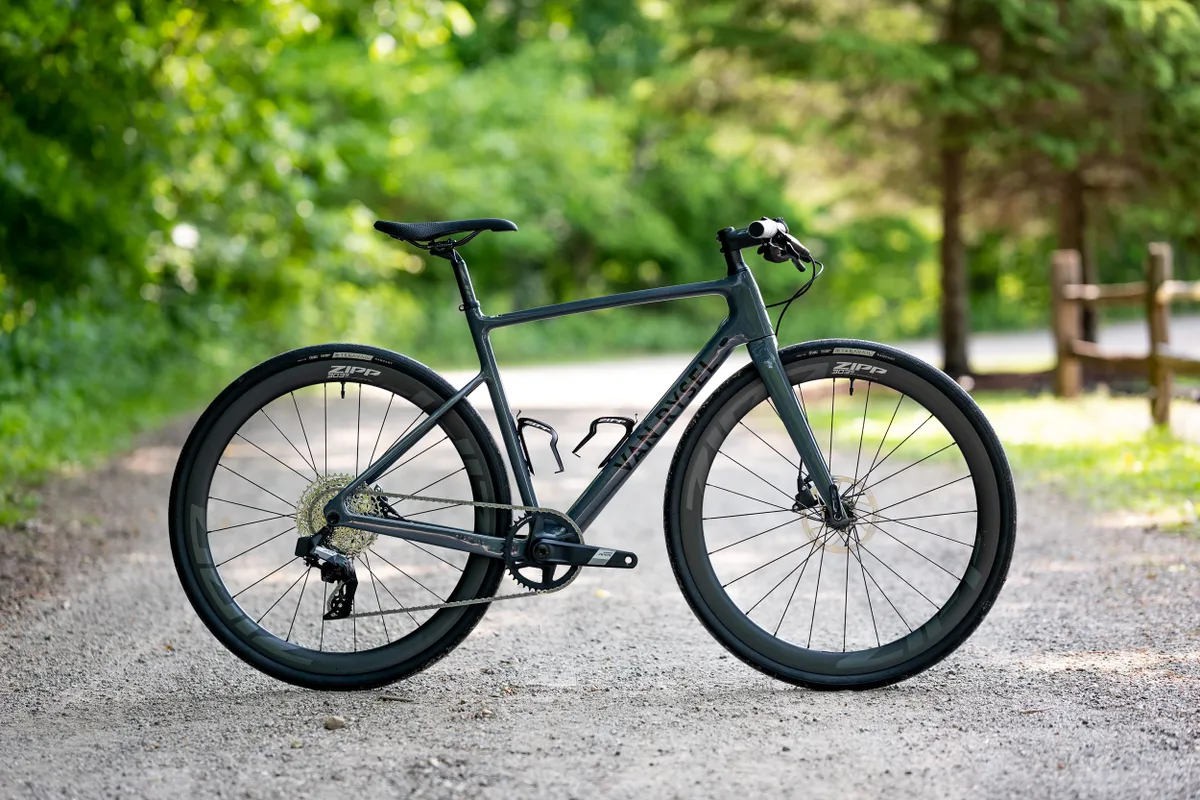
Apex mechanical also gets a flat-bar option.
You can now combine the mechanical drivetrain with any 12-speed mountain bike trigger shifter (GX, NX, SX, X01 or XX1) and use the new DB-S300-A1 brake lever and flat-mount disc caliper.
The mechanical flat-bar Apex groupset offered by SRAM will come as standard with a (non-Apex) 12-speed Gripshift.
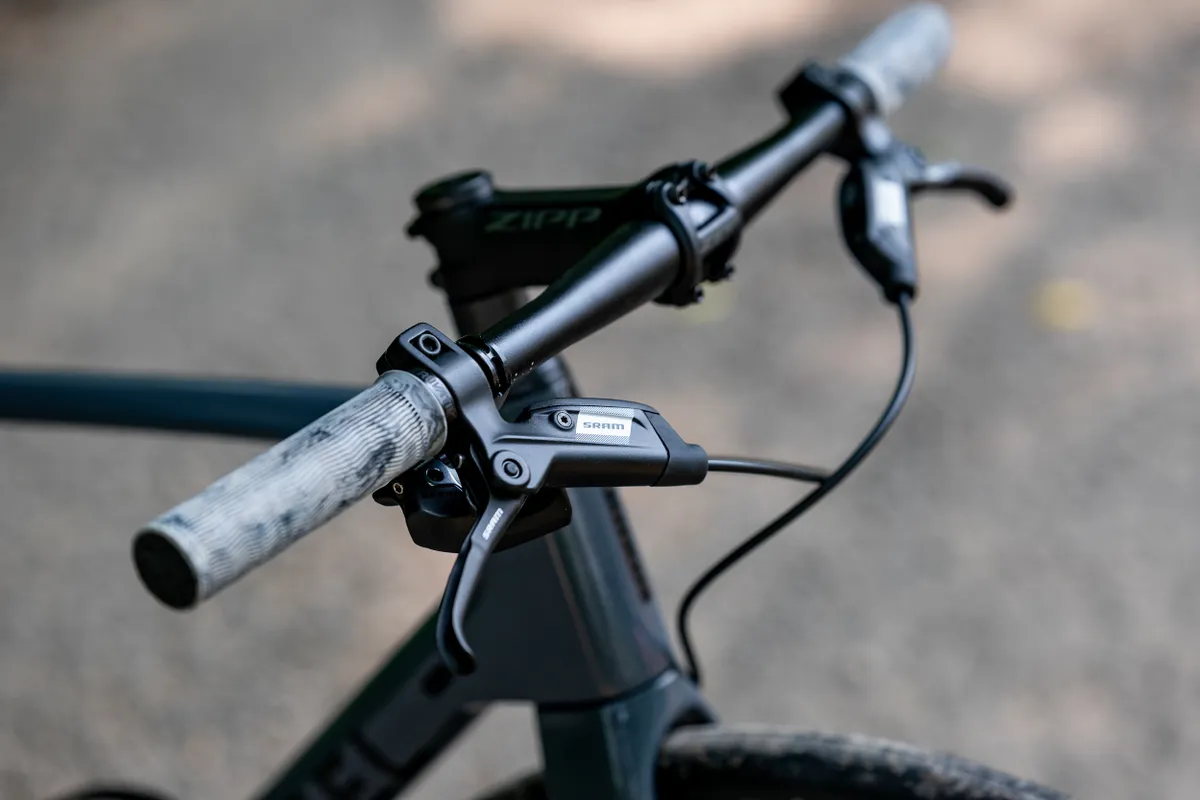
We’d expect to see the flat-bar mechanical combination on plenty of model year 2024 hybrid bikes and commuter bikes.
Like the mechanical flat-bar option, SRAM won’t be offering a flat-bar Apex AXS shifter as standard.
Instead, flat-bar AXS groups will come with the GX Eagle AXS controller.
What are the differences between SRAM Apex and SRAM Rival?
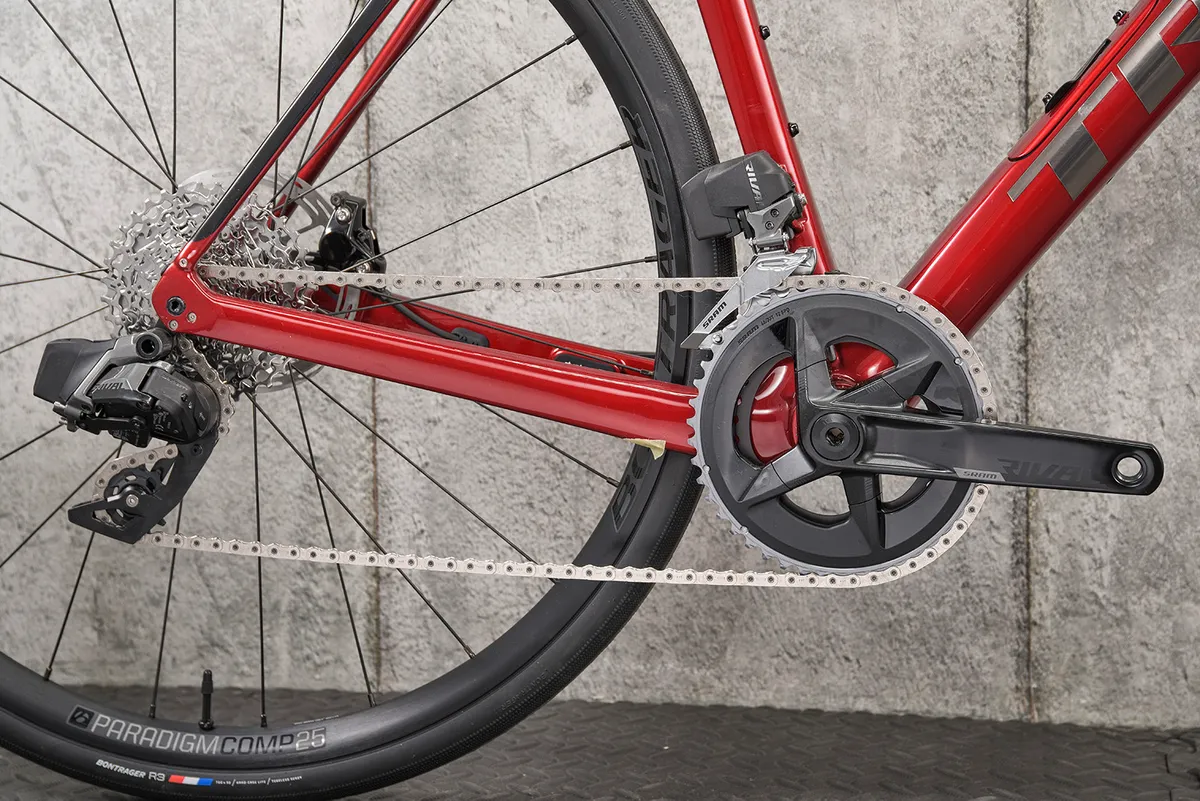
Aside from Apex being offered in XPLR and Eagle 1x-only options, when it comes down to the individual parts, the only real differences between Apex and Rival, on the next rung up on SRAM’s groupset ladder, are material choices and finish.
They share the same electronics and motors, as well as the same brake design, according to SRAM, so performance should be the same, although we will, of course, bring you our verdict.
Comparing an Apex AXS XPLR setup to a Rival AXS XPLR drivetrain, the Rival setup will be around 100g lighter.
Meanwhile, mechanical Apex now weighs the same as Rival AXS, so it’s approximately 100g lighter than its electronic version.
When it comes to Apex Eagle, things are a little different, with the mechanical derailleur based on Eagle’s GX design but modified to include a derailleur-mounted barrel adjuster.
You can ‘mullet’ mix Rival 1 mechanical and Eagle mountain bike parts, but need to run an inline barrel adjuster on the cable.
SRAM Apex availability and complete bike prices
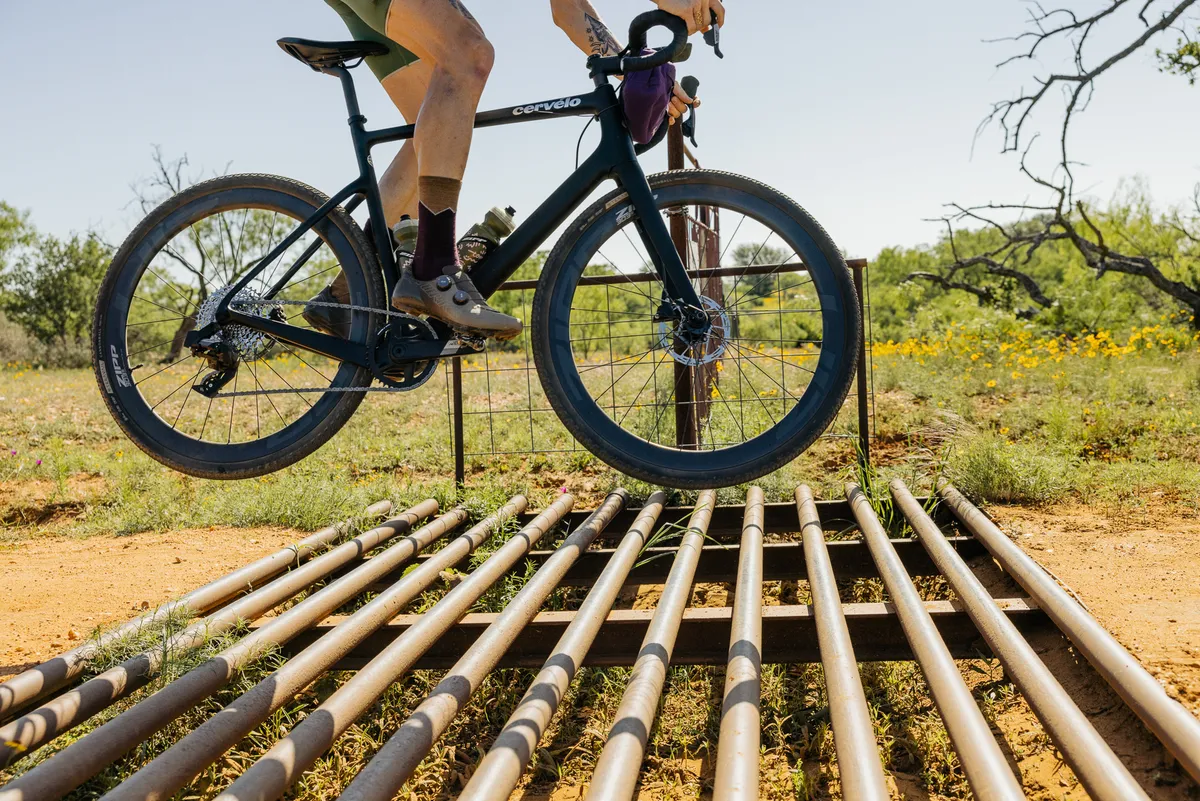
SRAM Apex AXS is available from June 2023, with the mechanical group following in September.
Complete bike prices haven’t yet been confirmed, but Brad Menna, SRAM’s road product manager told us they’ve seen complete AXS-equipped bikes from $2,500 to $4,000 (with a few outliers at around $2,000).
Meanwhile, Menna says we can expect mechanical Apex bikes from around $2,000 (again, with a few cheaper outliers, too).
SRAM Apex pricing
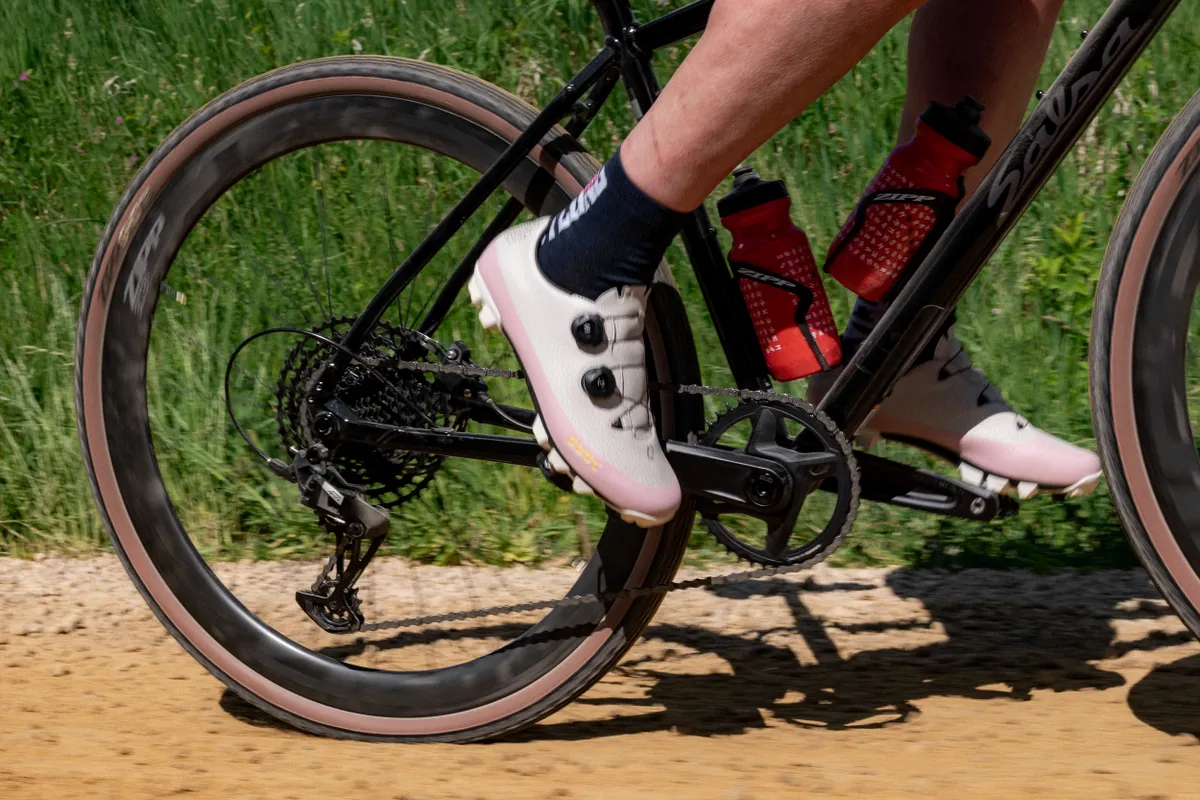
SRAM Apex mechanical disc brake groupset pricing
- SRAM Apex XPLR groupset: £1,060/$987/€1,176/AU$1,697
- SRAM Apex Eagle groupset: £1,035/$971/€1,149/AU$1,670
- SRAM Apex XPLR flat-bar groupset: £730/$696/€811/AU$1,197
- SRAM Apex Eagle flat-bar groupset: £705/$680/€784/AU$1,170
*VAT included with £ and € pricing.
A groupset includes a shift-brake system (levers and calipers), rotors, crankset, chain, cassette and rear derailleur. The bottom bracket is priced separately.
SRAM Apex AXS disc brake groupset pricing
- SRAM Apex AXS XPLR groupset: £1,262/$1,195/€1,411/AU$2,054
- SRAM Apex AXS Eagle groupset: £1,303/$1,294/€1,460/AU$2,242
- SRAM Apex AXS XPLR flat-bar groupset: £1,099/$1,063/€1,225/AU$1,556
- SRAM Apex AXS Eagle flat-bar groupset: £1,140/$1,162/€1,274/AU$2,016
*VAT included with £ and € pricing
A groupset includes shift-brake system (levers and calipers), rotors, crankset, chain, cassette, rear derailleur, battery and charger. The bottom bracket is priced separately.
undefinedundefinedundefinedundefinedundefinedundefinedundefinedundefinedundefinedundefinedundefinedundefinedundefinedundefinedundefinedundefinedundefinedundefinedundefinedundefinedundefinedundefinedundefinedundefinedundefinedundefinedundefinedundefinedundefinedundefinedundefinedundefinedundefinedundefinedundefinedundefinedundefinedundefinedundefinedundefinedundefinedundefinedundefinedundefinedundefinedundefinedundefinedundefinedundefinedundefinedundefinedundefinedundefinedundefinedundefinedundefinedundefinedundefinedundefinedundefinedundefinedundefinedundefinedundefinedundefinedundefinedundefinedundefinedundefinedundefinedundefinedundefinedundefinedundefinedundefinedundefinedundefinedundefinedundefinedundefinedundefinedundefinedundefinedundefinedundefinedundefinedundefinedundefinedundefinedundefinedundefinedundefinedundefinedundefinedundefinedundefinedundefinedundefinedundefinedundefinedundefinedundefinedundefinedundefinedundefinedundefinedundefinedundefinedundefinedundefinedundefinedundefinedundefinedundefinedundefinedundefinedundefinedundefinedundefinedundefinedundefinedundefinedundefinedundefinedundefinedundefinedundefinedundefinedundefinedundefinedundefinedundefinedundefinedundefinedundefinedundefinedundefinedundefinedundefinedundefinedundefinedundefinedundefinedundefinedundefinedundefinedundefinedundefinedundefinedundefinedundefinedundefinedundefinedundefinedundefinedundefinedundefinedundefinedundefinedundefinedundefinedundefinedundefinedundefinedundefinedundefinedundefinedundefinedundefinedundefinedundefinedundefinedundefinedundefinedundefinedundefinedundefinedundefinedundefinedundefinedundefinedundefinedundefinedundefinedundefinedundefinedundefinedundefinedundefinedundefinedundefinedundefinedundefinedundefinedundefinedundefinedundefinedundefinedundefined